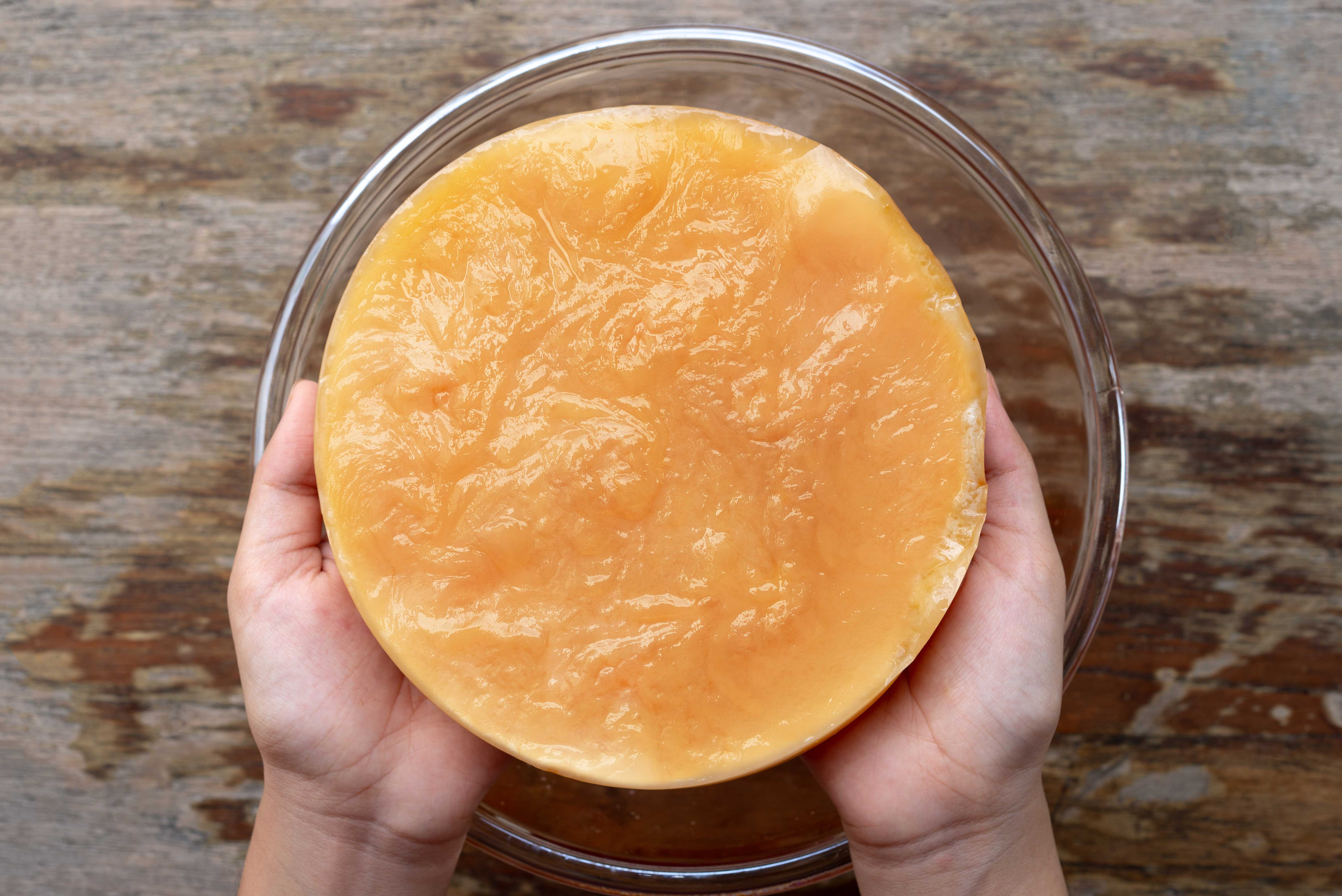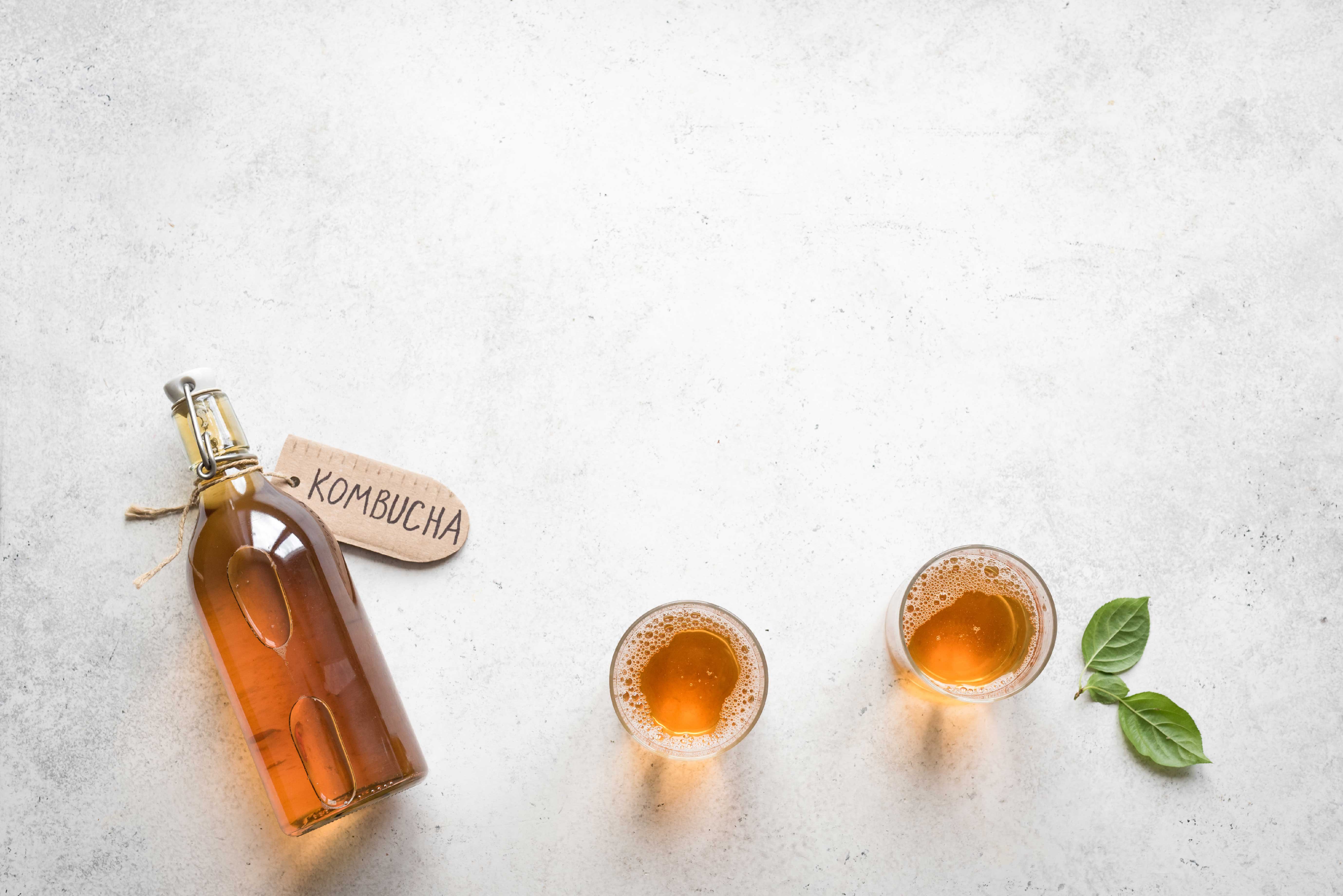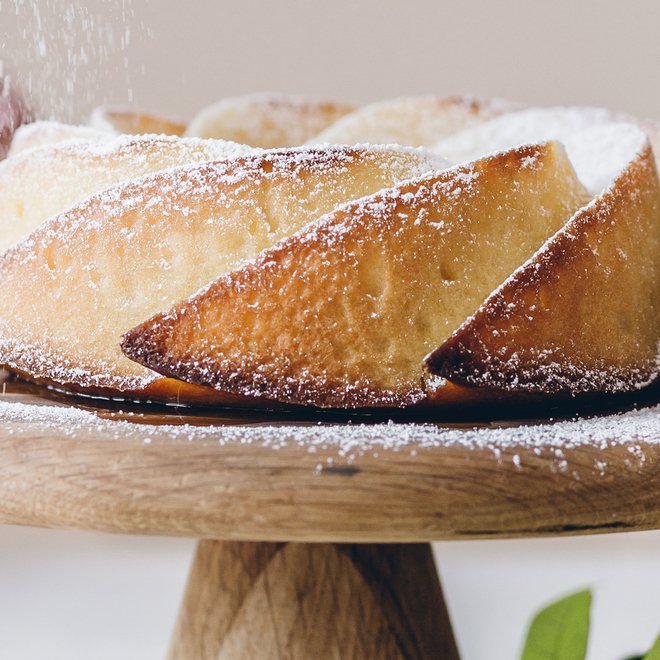Kombucha is having a moment. But what is it? Read on to discover more about this fermented tea health drink
What is kombucha?
Kombucha is made by adding various strains of bacteria, yeast and sugar to black or green tea, which is then allowed to ferment for a week or more. The resultant liquid is fizzy and has a mild, vinegary aroma. “It is higher in antioxidants than rooibos tea and is known for its anti-inflammatory potential,” says Keren Gird, senior dietician at Beyond Nutrition, Dubai.
One of the by-products of the fermentation process is acetic acid, which has been shown to slow the growth of harmful bacteria and yeasts. Kombucha made with green tea is thought to contain antioxidants that help the body to fight free radicals that cause cell damage. Vitamins C, B1 and B12 can also be found in this fizzy beverage.
The bacteria and yeast culture that forms on the surface of kombucha during the fermentation process is known as a SCOBY, or a symbiotic culture of bacteria and yeasts. It looks like a rubbery pancake and is often called a ‘mother’. You can buy a dehydrated SCOBY online.
You can also experiment with a variety of flavours when making kombucha. “Normally you would add your selected flavours to the kombucha after it has finished fermenting,” says Katie Christou, food and beverage director at Lowe, a contemporary restaurant in Dubai. “You would remove the symbiotic culture of bacteria and yeast (SCOBY) and steep the ’flavour’ for 2-3 days, depending on how strong you want it to be. The flavour can come from juice, syrup or chopped fruits. We serve ours chilled over ice but it can be served at room temperature,” she adds.

Where did it start?
Kombucha has around 80 names worldwide. Some of them include Red Tea Fungus, Medusa Tea and Gift of Life. China, Japan, Russia and Korea have all laid claim to having first produced kombucha thousands of years ago. While there’s no solid evidence to support these claims, we can be fairly sure that this fermented beverage first appeared on the scene in the Far East, where tea was a popular drink.
Buy now: Saba ginger & turmeric kombucha
How do I store the SCOBY?
Place extra SCOBYs in a glass jar with a plastic lid. Pour fresh, unflavoured kombucha tea into the jar until the SCOBYs are completely covered. Replace the lid and put the jar in a dark cupboard. Check on it from time to time and top up with fresh kombucha if needed. Keep the jar out of direct sunlight and do not refrigerate.

How do I make a Kombucha activation batch?
To make two litres you will need a dehydrated kombucha starter (SCOBY), which you can buy online, a two-litre glass jar and a sterilised muslin cloth. For the dehydrated SCOBY you need 750ml boiling water; 30g SpinneysFOOD extra fine caster sugar; two tea bags of your choice and 125ml vinegar. You can’t drink your activation batch of kombucha neat but you can use it as an acid in salad dressings or meals.
The method
Step 1: To hydrate your SCOBY, combine the boiling water and sugar in the sterilised jar and stir to dissolve the sugar.
Step 2: Add the tea bags and steep for about 10 minutes. Take out the tea bags and leave the tea to cool completely.
Step 3: Stir the vinegar into the tea and add the SCOBY.
Step 4: Dampen a muslin cloth and secure it to the jar opening with an elastic band or kitchen string.
Step 5: Leave the jar, undisturbed, at 20°C, out of direct sunlight for 30 days.
Step 6: Sprinkle some vinegar over the cloth every day to prevent any mould.

